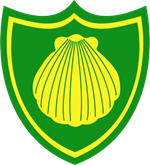Computing
Intent
At St. James’, it is our intent to provide all children with a high-quality education in computing which provides access to an ever-changing digital world. It is our aim that children will be respectful, responsible and safe online users. Ready not just for the next phase in their education, but ready to be digital citizens in a technological society. Upon leaving St. James’, our aim is to provide children with the relevant skills and knowledge that is required to understand the three areas of computing: Computer Science, Information Technology and Digital Literacy; with an awareness of measures that can be taken to keep themselves and others safe online. At St. James’, Children will be given the opportunity to apply and develop what they have learnt across the wider curriculum.
Implementation
Delivery of the curriculum has been enabled by a significant investment in Purple Mash, which is based on the National Curriculum. It is tailored to meet the needs of our children at St. James’: all key areas of the computing curriculum are taught and revisited during a child’s primary school years. This allows our children to build on their learning year after year: on vocabulary and skills. Pupils with SEND are enabled to access the curriculum through the use of IT.
Computing is taught discretely once a week, additionally technology is used across the curriculum. Pupils are also offered a yearlong lunchtime computing club with proportional representation of pupils from disadvantaged backgrounds and SEND. In the Early Years, the approach is through cross-curricular learning with an emphasis on hands-on experience.
Safeguarding
Children build online resilience through the use of ‘Project Evolve- Education for a Connected World framework’ which aims to support and broaden the provision of online safety education. At the beginning of every term, the first lesson of computing is a focus on an area of online safety. These include: Self-image and identity, Online relationships, Online Reputation, Online Bullying, Managing Online information and Privacy and Security. In addition to these lessons, every year we also take part in National Safer Internet Day in February. This day consists of an assembly and a number of lessons and activities promoting a specific yearly theme.
Impact
Through discussion and feedback, children talk enthusiastically about their computing lessons and speak about how they love learning on the computer. Children across the school will be able to articulate well about the potential risks of being online, and can talk about ways to keep safe.
Curriculum summary
Children in Year 1 and above are taught to:
KS1
- understand what algorithms are, how they are implemented as programs on digital devices, and that programs execute by following precise and unambiguous instructions
- create and debug simple programs
- use logical reasoning to predict the behaviour of simple programs
- use technology purposefully to create, organise, store, manipulate and retrieve digital content
- recognise common uses of information technology beyond school
- use technology safely and respectfully, keeping personal information private; identify where to go for help and support when they have concerns about content or contact on the internet or other online technologies
KS2
- design, write and debug programs that accomplish specific goals, including controlling or simulating physical systems; solve problems by decomposing them into smaller parts
- use sequence, selection, and repetition in programs; work with variables and various forms of input and output
- use logical reasoning to explain how some simple algorithms work and to detect and correct errors in algorithms and programs
- understand computer networks, including the internet; how they can provide multiple services, such as the World Wide Web, and the opportunities they offer for communication and collaboration
- use search technologies effectively, appreciate how results are selected and ranked, and be discerning in evaluating digital content
- select, use and combine a variety of software (including internet services) on a range of digital devices to design and create a range of programs, systems and content that accomplish given goals, including collecting, analysing, evaluating and presenting data and information
- use technology safely, respectfully and responsibly; recognise acceptable/unacceptable behaviour; identify a range of ways to report concerns about content and contact
